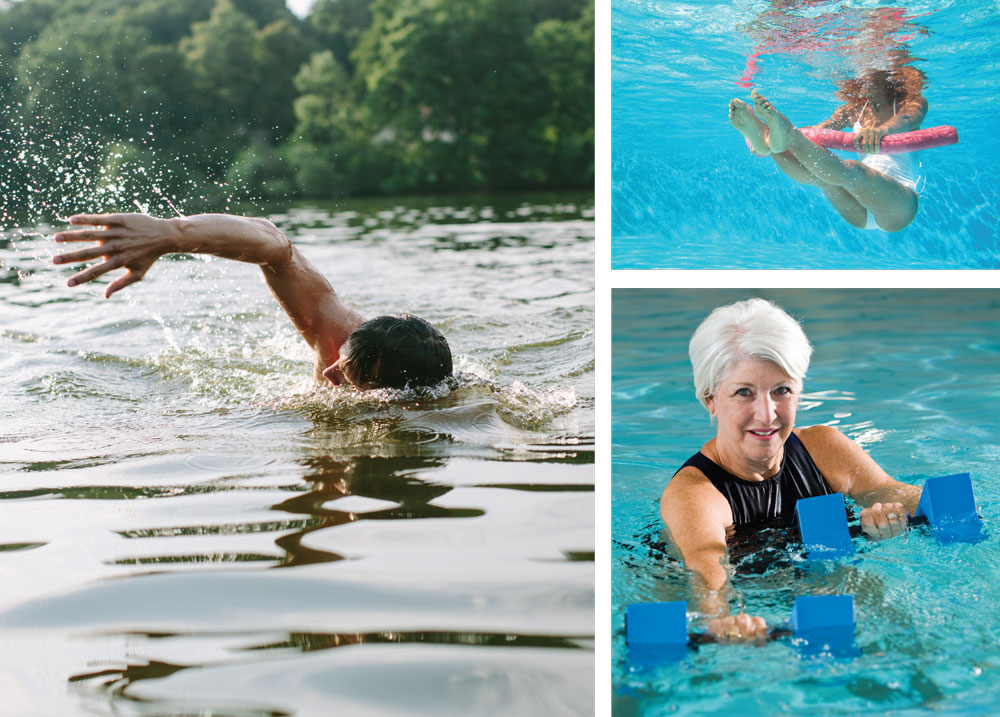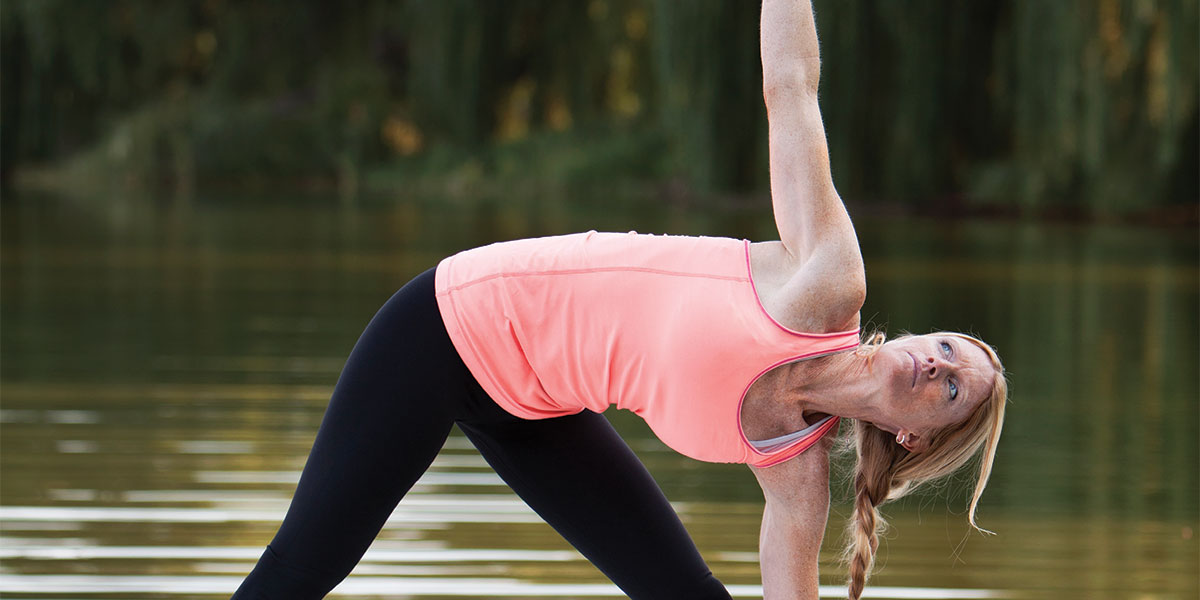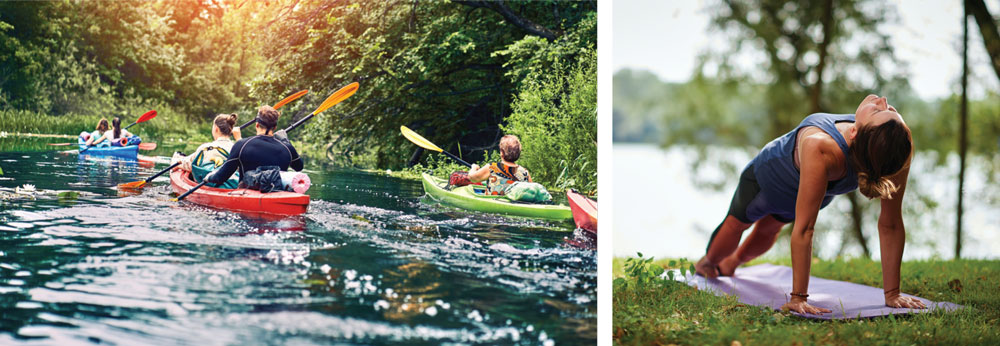Outdoor exercise can be a natural mood-booster; in fact, doing any exercise in an outside setting can improve your mood and reduce stress levels. If you’re feeling rundown, getting outside may be just what you need to turn things around — what better place to get outside than the lake? One unique exercise opportunity the lake offers is, of course, access to water!
Swimming
Swimming is one of the most effective and least injurious workouts there is, and the lake gives you the opportunity to do it while communing with nature. You need not focus on being perfect — we’re here to get a workout, not win the gold medal! Just swim the way you are most comfortable. Even though swimming is pretty intense on its own, you can use hand paddles, resistance gloves, or wrist and ankle weights to push it up a notch or two. Also consider using a kickboard, which can help you stay above water to focus on your core and lower body.
However, whether or not you have any swimming experience, make sure you’re safe in the water. Be cognizant of your body and surroundings, and stay hydrated. Remember to wear a brightly colored swimsuit or swim cap so you’re highly visible to vehicles on the lake, and always wear goggles to keep your vision clear. Particularly if you’re swimming alone, consider wearing a buoyancy belt to help keep your head above the water.
 Water-resistance workouts
Water-resistance workouts
Besides swimming on its own, consider some different water-based exercises. Water offers heavier resistance than air, so getting in the lake can give your workout a little more intensity, helping you burn more calories in less time. Moreover, water is buoyant, which provides more support for muscles and joints and helps you work harder without the negative impact on your body. This is especially beneficial for those of us with arthritis, osteoporosis, fibromyalgia, or injuries that make typical workouts more painful or risky. But remember: exercising in the water might feel easier on your body, but you’re still working hard. Especially if you’re going to be alone during your workout, consider using a floatation device such as a buoyancy belt, lifejacket or foam noodle to help keep your head above the water if you start getting tired.
To start, try simply walking in the water. This helps you get a feel for the resistance created by the water, as well as working your arms, core and lower body. Begin in shallow water, about waist-level. Try to not walk on your tiptoes; instead, push your feet into the ground in a heel-to-toe motion. Keep your arms in the water, moving them naturally as you walk. Once you’re comfortable in the water at about chest level, try some high-knee lifts as you walk, or pause and try some jumping jacks. You can easily increase the intensity with hand or ankle weights.
When you’re in the water at shoulder level, try some forward arm lifts. With your palms facing upward, keep your arms straight and lift your forearms up in front of you until your hands are on the surface. Then, turn your palms downward and lower back down to your side. You can alternate this exercise with side arm lifts, which uses the same basic motion but with your arms rising up at your sides like an airplane. For more intensity, consider using wrist weights or foam dumbbells.
Paddling
Another great water-specific option is picking up a paddle. Canoes, kayaks, and paddleboards all offer great arm, back, and core exercises, as well as improved balance. Plus, depending on technique and intensity level, paddling can have similar calorie-burning benefits to step aerobics or HIIT workouts. Paddling also allows you to explore the lake in a different way, perhaps finding coves you’ve never seen before.
Along the water
If you prefer to stay dry, getting outside at the lake is still an easy, beneficial way to exercise! With little to no equipment, going on a walk or jog around the lake or visiting one of the many trails or parks in the area provides a great workout. If you want to add a little something extra, bring some hand or wrist weights or try bodyweight training — a no-cost method that can easily be adjusted to any fitness level, meaning you can make it as challenging (or as leisurely) as you’d like. Bodyweight exercises consist of simple movements like pushing, pulling, squatting, bending, twisting and balancing. Adding a bodyweight element to your walk or jog can be as simple as holding a plank position to warm up and stretch before you set off on your walk or stopping to do a set of tricep dips on a trail-side bench.
If you’re more of a Zen landlubber, consider some outdoor yoga. Doing yoga on the lake can help to ease your mind and improve your practice and breathing techniques. After all, meditation is an essential component of yoga, and many of us find it easier to meditate when surrounded by nature. Plus, all you really need is a nice flat spot and a towel or mat to help you balance. But if you’re prepared for extra balance, then try some yoga on a paddleboard — but make sure you’re wearing your swimsuit, just in case! ✦


